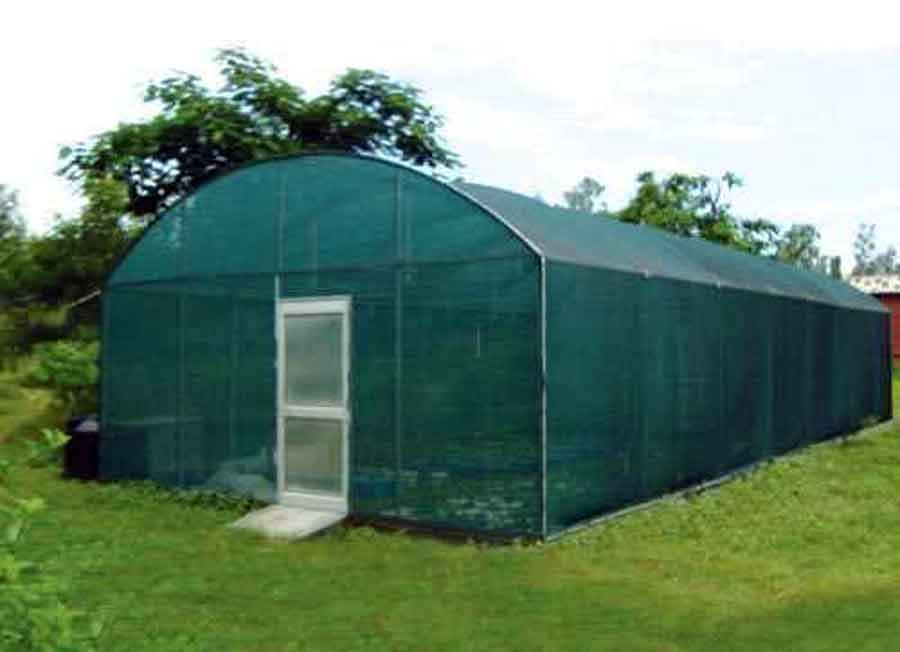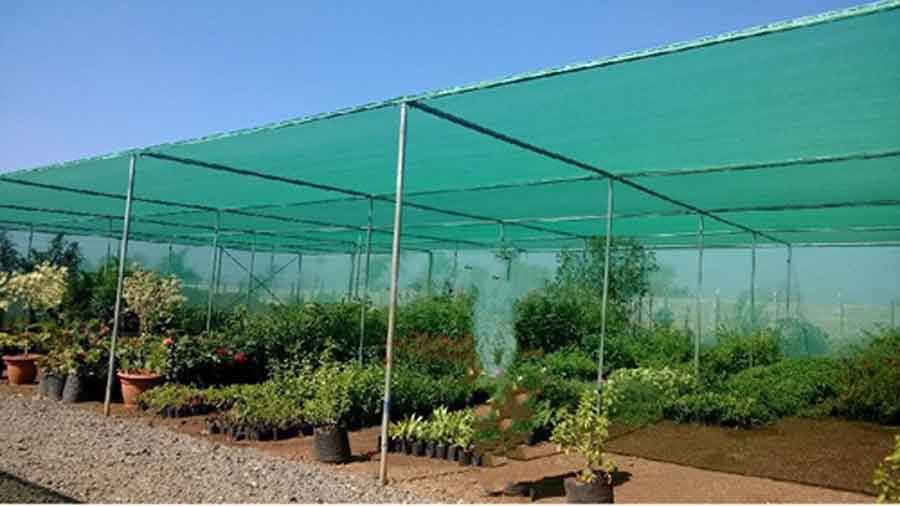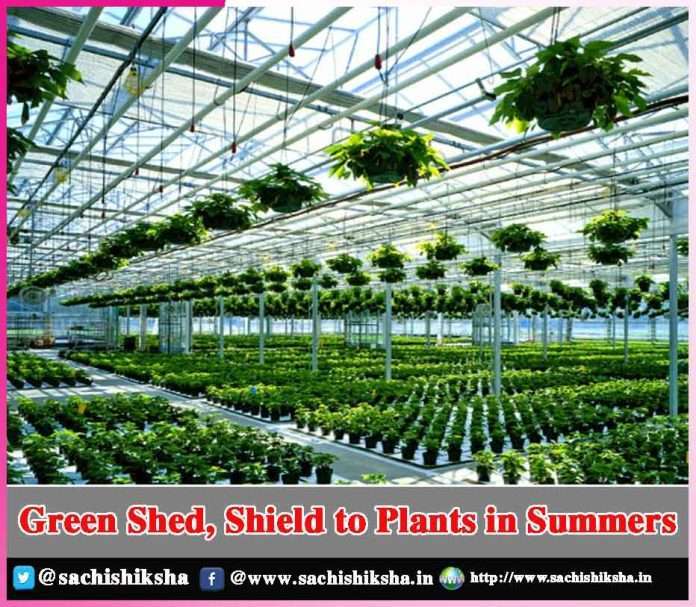Green Shed, Shield to Plants in Summers
Our natural environment is our most precious inheritance. India is blessed with a wonderful variety of natural landscapes and habitats. However, much of the scenic beauty of nature has been replaced by densely populated areas that sprawl for miles from urban centers.
This visual pollution affects us all and leaves us with a longing for a closer connection with nature. We spend about 90 per cent of our time indoors. Interior plants are an ideal way to create attractive and restful settings while enhancing our sense of well being.
In addition, house plants can be a satisfying hobby and can help purify the air in our homes. Indoor plants not only convert carbon dioxide to oxygen, but they also trap and absorb many pollutants. Many of these chemical compounds, which are released into our air through a process called “off-gassing,” come from everyday items present in our homes and offices.
Also Read:
- Keeping Plants in House Has Many Benefits
- Kitchen Gardening Ideas & Tips
- Chocolate Hills – Fascinating Natural Phenomena in Philippines
- Cultivate Rose, For a Rosy Future, Earn Handsome Returns
- Onions: A Must Have During Summer
To be a successful indoor gardener, you need to understand how the interior environment affects plant growth and how cultivation differs from growing plants outdoors.
Indian summers are pretty harsh in most parts of the country and while we can sit in the protection of our homes and enjoy the cool air from fans and air conditioners, our plants are left to the mercy of the blistering hot sun.
All year round we invest a lot of time and money into our gardens, caring for them and shaping them into a place where they can be our escape from the busy city life. So, it is important that we keep our plants safe from the scorching heat.
Every plant loves the sun. It’s what nourishes them, helps them grow and blossoms into what they are meant to be. But too much of sunlight without proper care can be disastrous for them. That’s because, just like people, plants can experience sunburn too.
But avoiding the sun during the hot Indian summer can seem next to impossible. It is constantly over our heads, draining energy and causing dehydration. So, with the summer season at hand, it’s important to prepare the garden and ensure that the plants don’t wilt away in the heat.
If you’re aware that you live in a typically hot region, then this effort begins even earlier, when you’re planting the seeds. Here are some things to keep in mind when trying to protect your plants from the sun. Choose the right spot: when planting, put all those plants that require less water with those that need more water.
That way, these two will create a miniature ecosystem that will be mutually beneficial. You can also pull out your potted plants from areas that receive a full day of sun and get them in corners that are shaded and don’t receive as much sun through the day.
So far, we have learnt that protected cultivation aims to modify the micro climate of the plants by selective control of environment for the protection of the crops from biotic and abiotic stresses for healthy and safe crop production, notably all round the year including the off-season.
Green houses enable qualitative and quantitative production of ornamental crops of high value especially during the off-season for fetching better prices, that otherwise is not possible through open field cultivation. This is particularly helpful in cold areas with heavy snowfall or chill factors.
Different types of protected structures can be adopted for off-season and round the year cultivation of flowers and ornamental crops. Commonly used protected structures are – low tunnels, walk-in tunnels, net houses, greenhouses and mist chambers. These structures vary in their shape, design, height and size. We shall discuss some of these:
Table of Contents
Shade Net House

Cladding material used on the top and sides of the structure is generally a shade net. The shade nets are available in different colours with different percentages of shade factor. Suitability of colour and shade factor is location and season-specific. Generally, shade nets are used for hardening of fruit orchard planting material raised under greenhouses.
Advantages:
- They control high intensity solar radiation.
- They protect plants from frost.
- They also protect plants from large insects.
Green Shades

These objects in turn emit thermal radiation which is only partially transmitted out of the greenhouse. As a result of this, a part of the solar energy is continually retained in the greenhouse, leading to a temperature increase. This natural temperature rise in the greenhouse is utilised during winters to grow crops with or without supplementary heat.
During summers, the greenhouses are cooled as per the crop requirement. The closed side container of the greenhouse during the night results in trapping the air rich with carbon dioxide, which would improve photosynthetic activity during the early hours of the day. Air humidity in the greenhouse can also be increased or lowered.
In addition, favourable light conditions for crops, in terms of quality and quantity, can be created by providing supplementary lighting and shading systems.
In general, crops in greenhouses are either grown on beds or in pots irrigated by micro-irrigation systems. Off-season vegetables, flowers and ornamental/grow-bags, plants and nursery raisings are fairly remunerative practices in protected cultivation.
Advantages:
- Off-season cultivation of crops is possible round the year.
- Crop cultivation is possible under harsh environmental conditions.
- They provide excellent opportunities to produce export-quality crops.
- Early production of quality seedlings and planting materials is possible.
- More production per unit area in comparison to open field cultivation.
- Green houses can also be used for growing flower plants, strawberries and propagation of quality fruit plants.
- Insect, pest and weed management is easier in greenhouses than in open fields.
- Green houses can provide substantial income for cultivators having small land holdings.
Thus, green shades are of immense importance for they help in shielding plants in the summers.













































